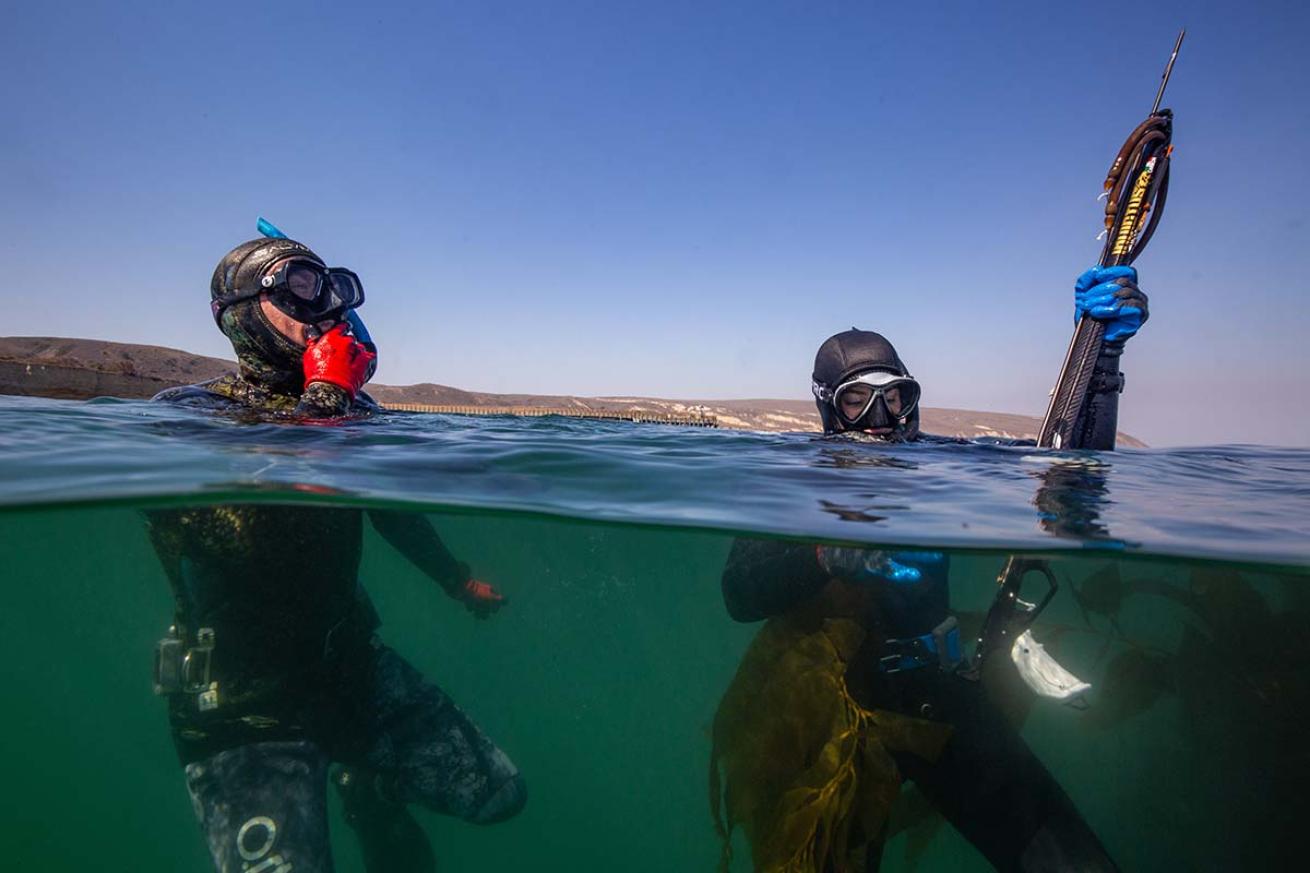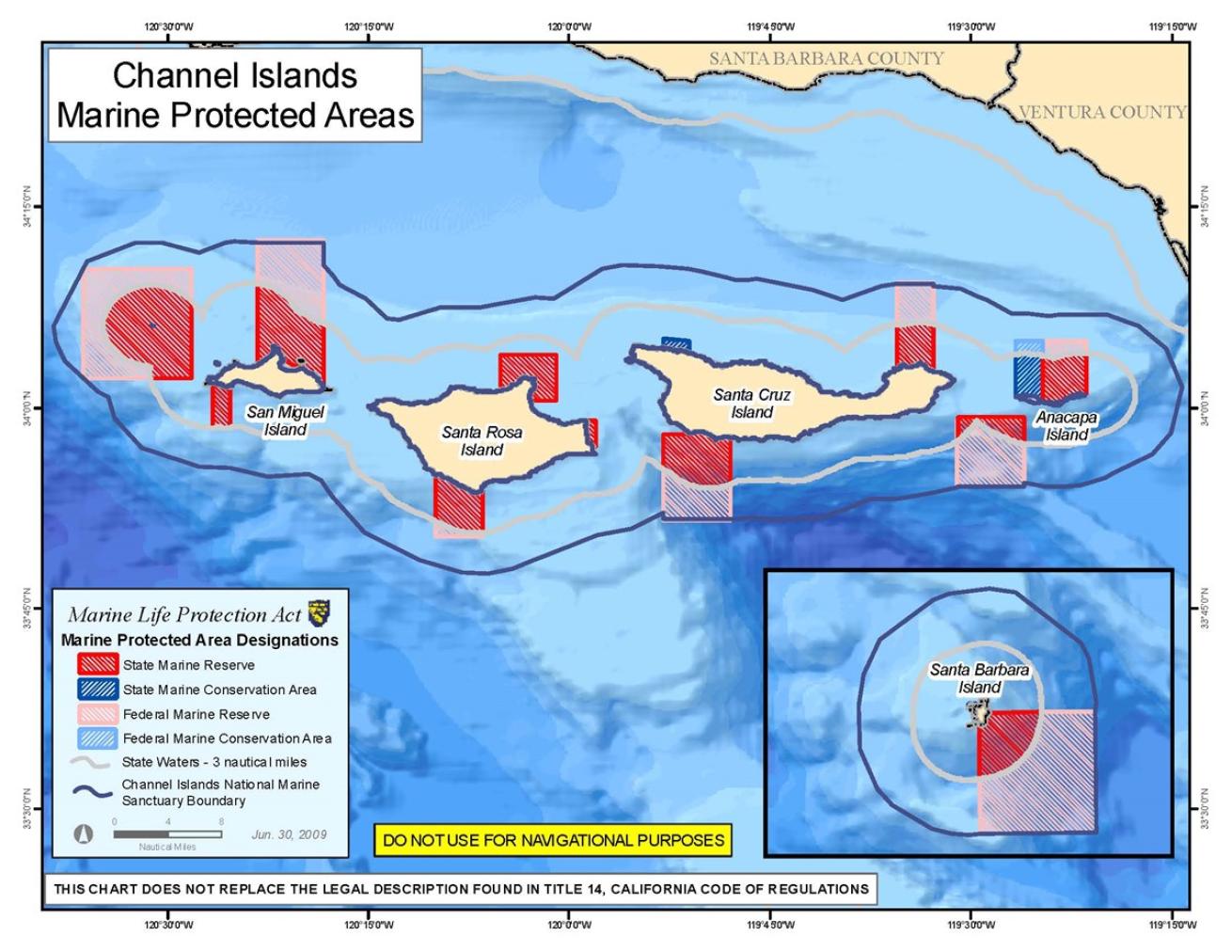A Diver's Guide to Fishing and Foraging in Channel Islands National Park

Michael LanghansTwo spearfishers float off of Santa Rosa Island, the park island second-farthest from the Southern California shore
The five islands of Channel Islands National Park are protected land, but fishing and foraging is allowed within most of the park’s waters. If you’re camping on one of the islands, collecting seafood is fun and practical – this leaves more room in your pack for camping and diving gear, and is a fresh break in between pre-packaged camp meals.
About 20 percent of the park’s waters are no-take marine protected areas. It’s important to research such island and any species-specific regulations before your trip: Phone data does not work on the islands, so it's not possible to pull these up sitting in your tent. A map of the parks’ protected areas is provided below. Activities like freediving and scuba diving are allowed in the marine reserves and conservation areas, but nothing can be taken from them.

National Parks ServiceThe marine protected areas of Channel Islands National Park.
Divers need a California Fishing License with an Ocean Enhancement Stamp to fish in the park. Information about all of California’s seasons and catch limits is available at wildlife.ca.gov. Here are the regulations for some of the most popular target species at the time of publication:
- California Spiny Lobster — The season runs from early October to mid-March. One individual can have seven lobsters in their possession, (such as three in the freezer at home and four in a game bag). Lobsters must have a 3.25 inch carapace—which runs from the back of the lobster’s eye socket to the rear end of its shell—for you to bring them home. Have a lobster gauge when diving as your catch must be measured underwater to ensure it’s a legal size before landing. A Lobster Report Card on catch effort must be filled out for each day and submitted to DFW online or by mail. Order this well ahead of a trip if you do not already have one. The DFW will mail this to you, it’s not something you can download from their website, and it can take two weeks to get to you. Charter boats, such as Spectre, will ask to see your report card before you begin your dive to ensure regulatory compliance.
Sea Urchins — This season is open year round. The bag limit is 35 a day for each species: red, purple, and black.
Rock Scallops — There is no size requirement for this year-round season that has a daily bag limit of ten.
California Sheephead — This season is open year round to divers, who are limited to five a day. The fish must be at least 12 inches long.
Rockfish — The season is open year round for divers; daily bag and possession limit is ten fish in combination with all species of rockfish, greenling and cabezon. The exception is vermillion rockfish, for which the limit is five. You cannot take yelloweye rockfish, bronzespotted rockfish or cowcod.
Trip Tip: A small dry bag filled with seawater can keep your catch fresh whether you’re headed home from a boat or hiking from the shore to your campsite.
Need to Know
Conditions: Year-round for cold water divers with the best conditions from the late summer through winter though late fall and winter swells and winds can cancel dives. Water temperatures range from high 40’s to 70 degrees in the summer and most days will be in the 30 to 40 foot range. Currents are common and can be strong; leaning kelp is a good indication of current.
Getting There: Divers can reach the islands through the Island Packers Ferry, private charters like Tuna Thumper, group charters like Spectre, or their private vessels.
Dive Equipment: Most local scuba divers opt for a 7 mm suit with a hood and gloves, or a drysuit; freedivers use a 5 or 7 mm suit with a hood.
Fishing Equipment: Speargun, fish stringer, game bag, lobster gauge
Camp Cooking: Portable grill with gas, spatula, knife, plate, utensils, ghee packets, lemons, salt, fresh water










